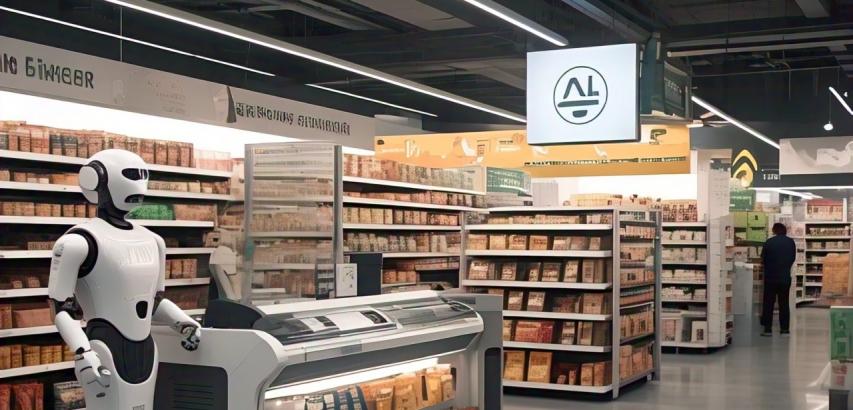A Smart Supermarket Project leverages cutting-edge technologies like the Internet of Things (IoT), artificial intelligence (AI), robotics, and big data analytics to revolutionize the shopping experience. By automating processes, personalizing services, and optimizing operations, smart supermarkets aim to enhance customer satisfaction, reduce operational costs, and promote sustainability. This innovative approach transforms traditional grocery shopping into a seamless, efficient, and futuristic experience.
Key Components
Automated Checkout Systems:
Cashier-less checkout using AI-powered cameras and sensors (e.g., Amazon Go).
 |  |  |
RFID tags or computer vision track items as customers pick them up.
 |  |  |
Smart Shelves:
IoT-enabled shelves monitor stock levels in real-time and alert staff for restocking.
Digital price tags update automatically based on demand or promotions.
 |  |  |
AI-Powered Personalization:
Mobile apps analyze purchase history to recommend products or offer tailored discounts.
In-store kiosks suggest recipes based on items in the customer’s cart.
 |  |  |
Robotic Assistants:
Robots guide customers to products, clean aisles, or manage inventory.
Autonomous robots restock shelves during off-peak hours.
Energy-Efficient Operations:
Smart lighting and HVAC systems adjust based on foot traffic and time of day.
 |  |  |
Solar panels and energy storage systems reduce reliance on the grid.
 |  |  |
Waste Reduction Systems:
AI predicts perishable item demand to minimize food waste.
Smart fridges and freezers optimize temperature to extend product shelf life.
 |  |  |
Contactless Shopping:
Mobile apps for scanning items, paying, and scheduling pickups or deliveries.
 |  |  |
Drone or autonomous vehicle delivery for online orders.
 |  |  |
Benefits
Enhanced Customer Experience: Faster checkout, personalized offers, and easy navigation.
Operational Efficiency: Automation reduces labor costs and human error.
Sustainability: Reduced food waste, energy savings, and eco-friendly packaging.
Data-Driven Insights: Analytics help optimize inventory, pricing, and promotions.
24/7 Operations: Autonomous systems enable round-the-clock service.
Challenges
High Initial Costs: Investment in IoT, robotics, and AI infrastructure.
Data Privacy Concerns: Protecting customer data from breaches or misuse.
Workforce Adaptation: Training staff to manage and maintain advanced systems.
Technical Glitches: Ensuring seamless integration of multiple technologies.
Real-World Examples
Amazon Go: Cashier-less stores using AI and computer vision for checkout-free shopping.
Walmart’s Intelligent Retail Lab (IRL): AI monitors inventory, freshness, and checkout lines.
Tesco’s Virtual Stores: AR-enabled shopping via smartphones in subway stations.
Kroger’s Smart Shelves: IoT shelves display real-time pricing and promotions.
Future Trends
AI-Driven Dynamic Pricing: Real-time price adjustments based on demand, stock, or competitor pricing.
Augmented Reality (AR) Shopping: Virtual try-ons for products like clothing or makeup.
Blockchain for Transparency: Tracking product origins (e.g., organic, fair-trade).
Hyper-Personalization: AI predicts customer needs and suggests products before they shop.
Robotic Delivery: Autonomous vehicles or drones for last-mile delivery.
The Smart Supermarket Project represents the future of retail, blending convenience, efficiency, and sustainability. By embracing technologies like AI, IoT, and robotics, supermarkets can offer unparalleled customer experiences while streamlining operations and reducing environmental impact. Despite challenges like costs and data security, the potential for innovation and growth makes smart supermarkets a cornerstone of the retail industry’s evolution. As consumer expectations continue to rise, these intelligent stores will set new standards for how we shop.
